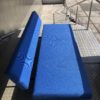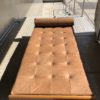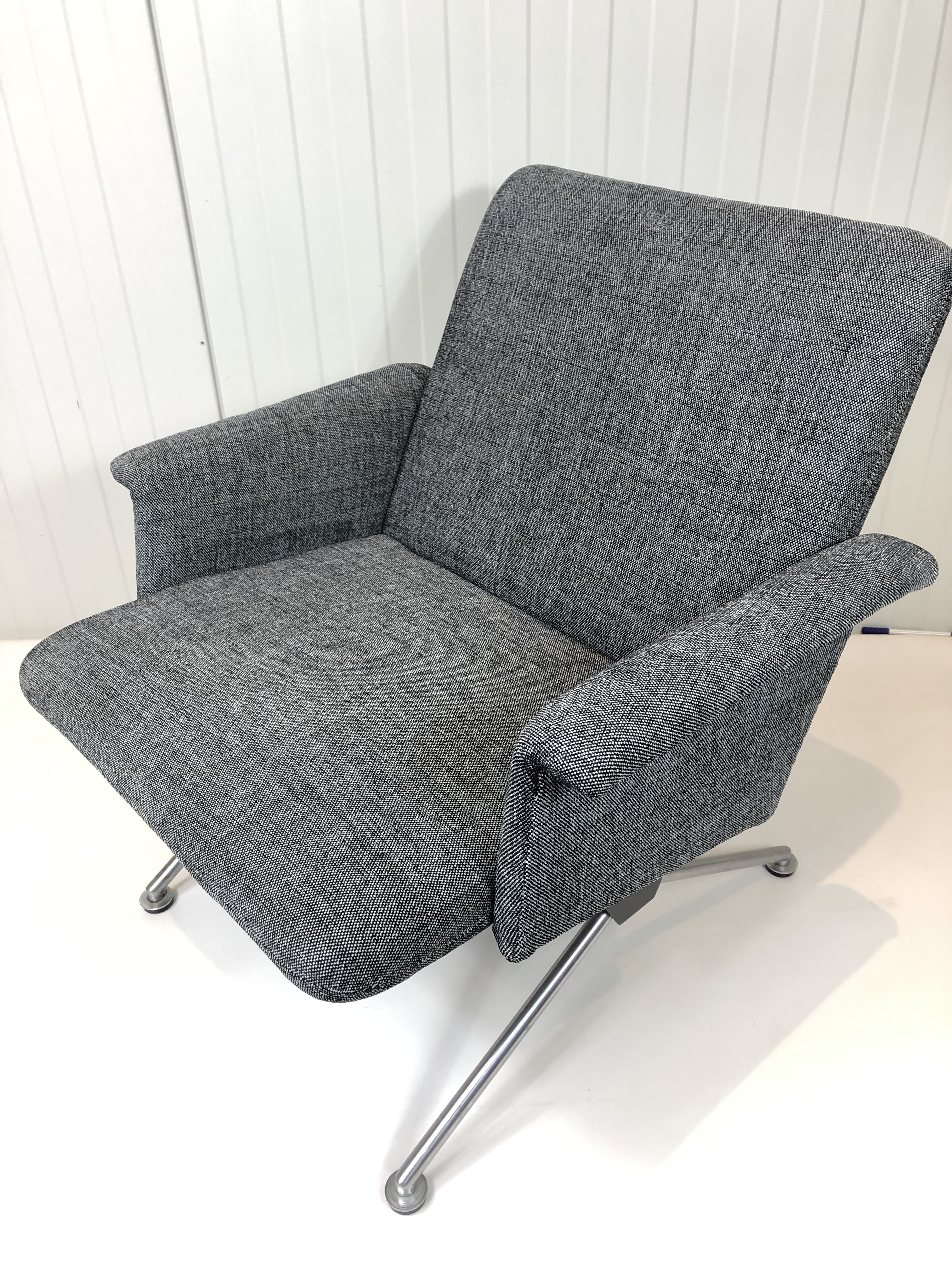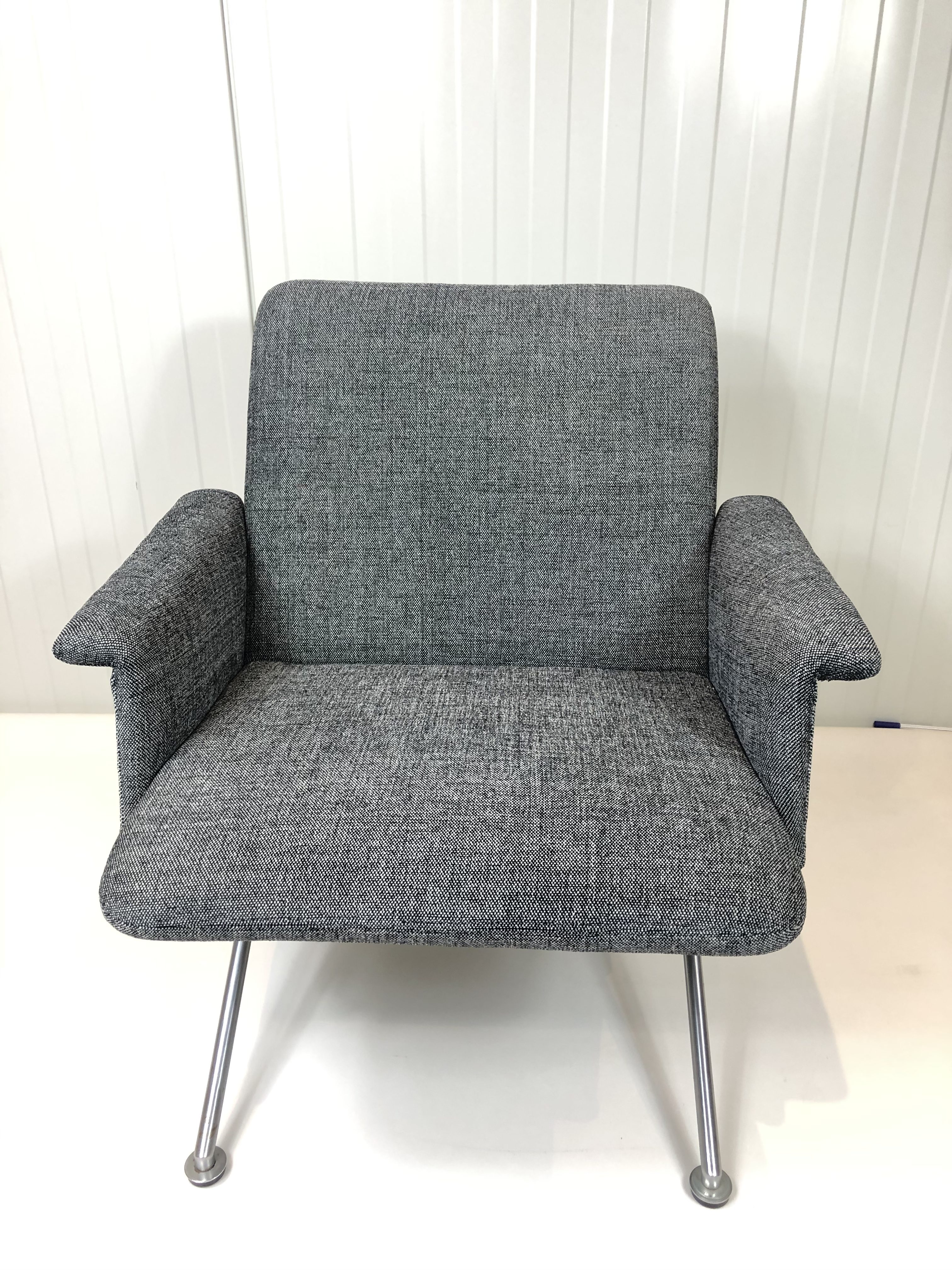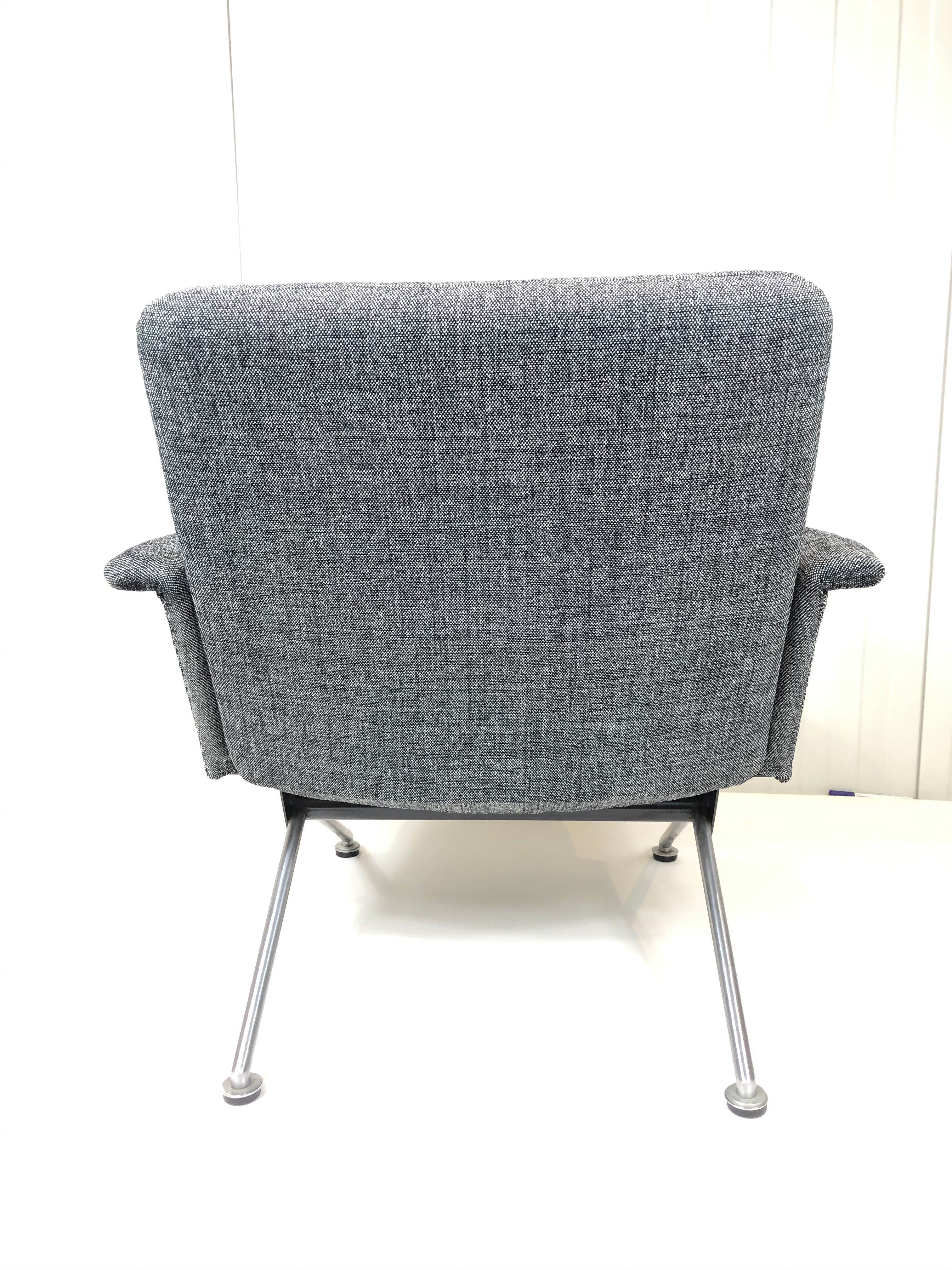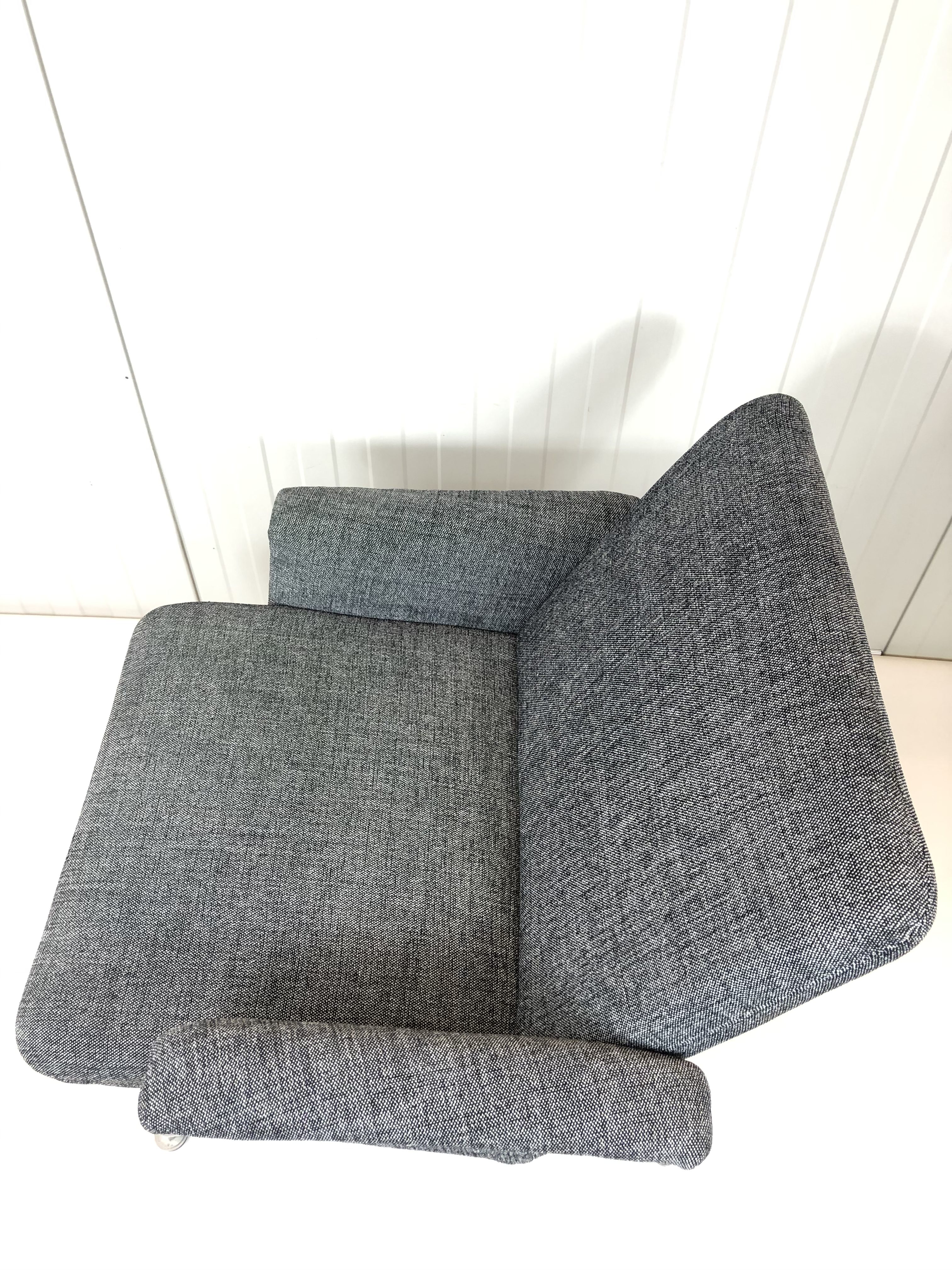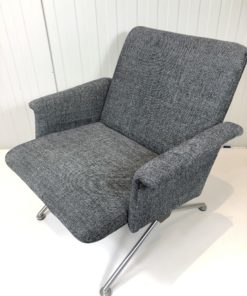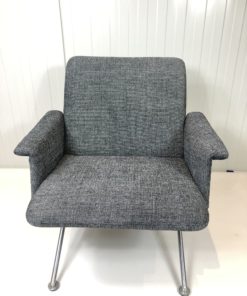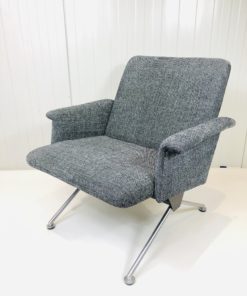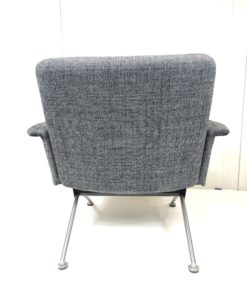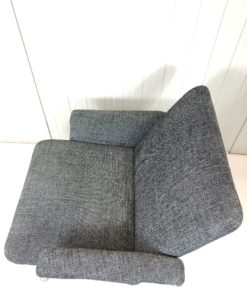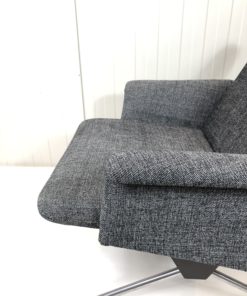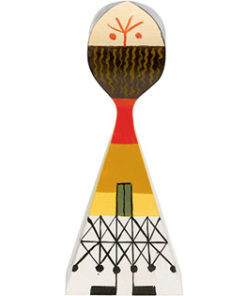Model 1432 Easy Chair by A.R. Cordemeyer for Gispen
€1.129,00
- Designed by A.R. Cordemeijer for Gispen
- Desined in the sixties
- Al new upholstery in black/white
- Width 72cm, depth 71cm Height 76cm SeatHeight 39cm
Uitverkocht
Born in 1924 in Bussum, Holland, André Robert (A. R.) Cordemeyer was a prolific Dutch industrial designer active in the 1950s and ‘60s, working chiefly for manufacturing brand Gispen. Limited verifiable information, however, is available about him today—and it is heavily debated whether or not Cordemeyer is the same person as Dutch designer Dick Cordemeijer, who designed the famous Cleopatra Daybed (1953-4) for Auping. One theory suggests that their biographical facts are often conflated because Dick Cordemeijer changed his name to André Cordemeyer after working for Auping.
It is believed that in 1952 Dick Cordemeijer was hired as a technician by the mattress manufacturer Auping. Designing in the postwar boom era, Auping—which was originally founded in 1888 and known at the time for its innovative steel mattress production—began to collaborate with renowned Dutch designers, including Friso Kramer (b. 1922), Wim Rietveld (1924-1985), and Frans de la Hayes (b. 1943). In 1953, Cordemeijer designed the Cleopatra Daybed, which Auping produced until 1982. Minimalist in design, the Cleopatra was inexpensive to produce. Featuring a wire mesh base and a coated metal frame with solid teak ends, the design became an instant classic and remains one of Auping’s most successful designs to date, having sold over a million models worldwide. Although he designed alongside many prolific designers and other luminaries, the Cleopatra was the one and only design by Dick Cordemeijer.
Sometime around 1954, André Cordemeyer began to work for Gispen. At this time, W. H. Gispen had resigned from his position as head designer, and Wim Rietveld, son of Gerrit Rietveld, was already designing for the company. During their tenures at Gispen, the younger Rietveld and Cordemeyer both developed pared down, functionalist designs—often working in collaboration—with a focus on practical, affordable furniture for office interiors.
The collaboration between Cordemeyer and Rietveld at Gispen was particularly successful in the 1407 Armchair (1954) and the 416 Easy Chair (1956)—both of which are highly sought-after on the vintage market today. Cordemeyer’s noteworthy solo designs for Gispen include the modular and colorful 5600 Storage System (1959); the molded plywood 1262 Chair (1959); the glass-topped 3637 Table (1959); the slimly upholstered 1409 and 1410 Armchairs (1959); the classic 1637 Swivel Chair (1963); and the molded plastic 2200 Seating Series (1967). Under Cordemeyer’s design direction, Gispen also found great success with the 7800 Kleurodesks (1958), a series of lacquered steel desks with linoleum-clad tops that were a bestseller well into the 1960s.
Cordemeyer is credited with convincing Gispen to introduce polypropylene into its production sometime around 1956. As a result, Gispen was the first Dutch manufacturer to industrially produce plastic furniture.
Around 1957 or ’58, Rietveld left Gispen to pursue other projects, but Cordemeyer stayed on until sometime in the 1970s, when he took on engineering work for wind energy projects. During his career, Cordemeyer always sought to incorporate new production techniques and materials into his designs in order to propose the most efficient products for the postwar Dutch population.
Gerelateerde producten
Merken

